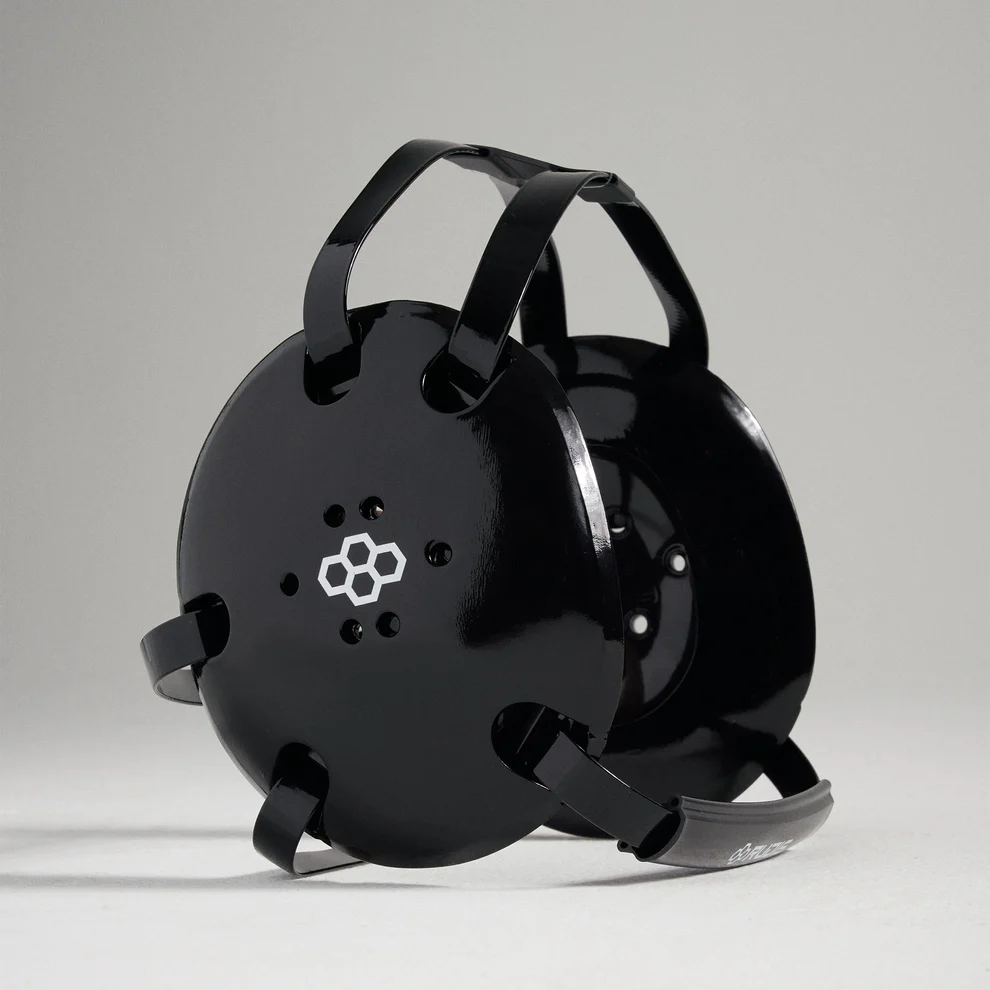Table of Contents
Cameron Allen
Over the past few years, the cauliflower ear injury/ deformity has been gaining a lot of popularity. While others may find it gross, there are many who obsess over these ears. Athletes are considered tougher and stronger because of their scarred ear cartilage.
Having an untreated cauliflower ear gives the visual effect of brute fierceness. Still, athletes are recommended to drain cauliflower ears as soon as possible to prevent any permanent damage from occurring. The following piece gives you important info regarding the draining of cauliflower ears:
What Is Cauliflower Ear and What Causes It?
Cauliflower ear or auricular hematoma is a condition characterized by a swollen and deformed appearance of the ear. It is caused by repeated trauma or injury to the ear, typically from activities such as contact sports like wrestling, boxing, or Brazilian Jiu-Jitsu.
The repeated impact can damage the ear cartilage and restrict blood flow, leading to fluid accumulation and the formation of scar tissue. Over time, if left untreated, the ear can become permanently deformed, resembling the shape of a cauliflower.
Prompt medical attention and proper care are important to prevent and treat it
How To Prevent Cauliflower Ears in Brazilian Jiu-Jitsu
To prevent cauliflower ear or auricular hematoma in Brazilian Jiu-Jitsu, it’s important to take certain precautions.
First, wearing well-fitted ear guards or headgear can provide protection and reduce the risk of injury. Additionally, practicing proper technique and avoiding excessive pressure on the ears during training can help minimize the chances of developing a cauliflower ear.
If you do experience any trauma or swelling to the ear, it’s crucial to seek medical attention promptly to prevent further complications. Remember, prioritizing your safety and well-being is essential in any martial art.

Matman headgear is designed with a focus on providing a secure fit, ensuring that it stays in place during matches and practices.
How To Recover From Cauliflower Ear
To recover from cauliflower ear, it’s important to seek medical attention as soon as possible. A healthcare professional can drain any accumulated fluid or blood from the affected area and provide appropriate treatment.
Resting the injured ear and avoiding any further trauma or injury is crucial for the recovery process. Applying cold compresses and taking over-the-counter pain relievers can help alleviate discomfort and reduce swelling.
It’s essential to follow the medical advice and care instructions provided by the healthcare professional to prevent permanent damage and ensure proper healing.
6 Steps For Draining Cauliflower Ear at Home
Step 1: Cleaning the area around the ear to prevent infection.
Step 2: Numbing the ear with a local anesthetic to minimize discomfort or you can use an ice pack
Step 3: Making a small incision in the ear to access the accumulated fluid or blood.
Step 4: Draining the fluid or blood using a syringe or other appropriate method.
Step 5: Applying pressure or using compression to prevent re-accumulation.
Step 6: Providing aftercare instructions, such as keeping the ear clean and potentially using a dressing or bandage. It’s important to consult with a healthcare professional for proper evaluation and treatment.
5 Things You Need To Drain Your Cauliflower Ears
To drain cauliflower ears, you would typically need the following items:
-
Sterile needle or syringe: This needle is used to puncture blood vessels in the ear and drain the accumulated fluid or blood.
-
Antiseptic solution: To clean the area before and after the procedure to minimize the risk of infection.
-
Sterile gauze or cotton pads: Apply pressure to drain and absorb any fluid or blood that is drained.
-
Gloves: To maintain proper hygiene and prevent contamination during the procedure.
-
Antibiotic ointment: Apply after draining the ear to help prevent infection and promote healing.
Bonus: Get yourself a pair of Caulibuds cauliflower ear magnets. These magnets are the best on the market to helping you prevent cauliflower ear from forming and help minimize ear drainage. Made with superior quality silicone for optimal compression you can say goodbye to that ear drainage!
How To Train BJJ While Your Cauliflower Ear Is Healing
When your cauliflower ear is in the early stages of healing, it’s important to take precautions while training Brazilian Jiu-Jitsu to prevent further damage or discomfort. Here are some tips to train BJJ while your cauliflower ear is healing:
1. Protect your ears: Make sure to wear appropriate ear protection, such as ear guards or headgear, to minimize the risk of further injury or aggravation to your cauliflower ear.
2. Communicate with your training partners: Let your training partners know about your healing cauliflower ear so they can be mindful during training. Avoid putting excessive pressure on your ears or participating in activities that may have a direct impact on the affected area.
3. Modify your training: During the healing process, consider modifying your training routine to avoid positions or techniques that put significant pressure on your ears. Focus on techniques that prioritize control and leverage rather than relying on heavy pressure.
4. Be mindful of your body: Listen to your body and take breaks when needed. If you feel discomfort or pain in your cauliflower ear during training, it’s important to stop and assess the situation. Pushing through the pain may worsen the condition.
5. Proper care and hygiene: Continue to clean and care for your cauliflower ear as recommended by a healthcare professional. Follow their instructions for cleaning, applying medication, and protecting the area during training.
Remember, it’s crucial to prioritize your health and allow your cauliflower ear to heal properly. If you have any concerns or questions, it’s always best to consult with a healthcare professional who can provide personalized advice based on your specific situation.

Safety Tips When Draining Cauliflower Ears on Your Own
1. Sterilization: Ensure that all tools, including needles or syringes, are properly sterilized before use to minimize the risk of infection.
2. Cleanliness: Thoroughly clean the affected area and your hands with an antiseptic solution before attempting to drain the pus drainage cauliflower ear.
3. Technique: Use a sterile needle or syringe to gently puncture and drain the ear and allow the fluid or blood from open wound to drain. Avoid further incision or bleeding by applying excessive pressure or force.
4. Hygiene: Maintain proper hygiene throughout the procedure by wearing gloves and using sterile gauze or cotton pads to absorb any fluid or blood.
5. Follow-up care: After draining the cauliflower ear, apply an antibiotic ointment and cover the area with a sterile dressing to prevent infection. Monitor the healing process and seek medical attention if any complications arise.
Buy some cauliflower ear magnets too if you want your ear to stay in shape as long as possible.
It should be noted that these tips are solely for educational purposes only. It’s strongly advised and recommended to consult with a trained healthcare professional who can perform the procedure safely and provide appropriate care.
Doing this yourself could lead you to end up with a permanent deformity or even a skin infection.
Matman headgear is designed with a focus on providing a secure fit, ensuring that it stays in place during matches and practices.

People Also Asked
How long does it take to recover from cauliflower ear treatment?
The recovery time for cauliflower ear treatment can vary depending on the severity of the condition and the chosen treatment method. Generally, it can take several weeks to a few months for the ear to fully recover.
It’s important to follow the recommended treatment plan provided by a healthcare professional, which may include draining the ear, applying compression, and wearing protective gear.
Additionally, practicing good ear hygiene and avoiding activities that may put excessive pressure on the ear can help promote faster healing. If you have any concerns or if the recovery process seems to be taking longer than expected, it’s always best to consult with a healthcare professional for personalized advice.
When To See A Doctor About Cauliflower Ear Draining?
If you’re considering draining cauliflower ear on your own, it’s important to note that it’s generally recommended to seek a medical professional or medical attention for this procedure.
However, if you’re wondering when to get professional medical advice or see a doctor about cauliflower ear draining, it’s best to consult with a healthcare professional if you experience any of the following:
1. Severe pain: If you’re experiencing intense or worsening pain in the affected outer ear, it’s advisable to seek medical attention.
2. Infection signs: If you notice signs of infection such as redness, swelling, warmth, or discharge from the ear, it’s important to see a doctor immediately.
3. Hearing loss difficulties: If you’re experiencing any changes in your hearing, it’s best to have a medical professional evaluate your condition.
4. Complications: If you attempt to drain the cauliflower ear on your own and encounter complications such as excessive bleeding or difficulty in the procedure, it’s crucial to seek immediate medical attention.
What Happens If You Don’t Drain Your Cauliflower Ear?
If you choose not to drain your cauliflower ear, it can lead to potential complications. The accumulation of blood or fluid in the ear can cause the underlying cartilage to become permanently deformed, resulting in the characteristic appearance of the cauliflower ear.
This can affect the ear’s shape, symmetry, and function. Additionally, without drainage, the trapped fluid can increase the risk of infection and swelling, which can lead to further complications. It’s important to seek medical attention if you have cauliflower ear to prevent these long-term consequences and to receive appropriate treatment.
Do Cauliflower Ears Go Away?
Cauliflower ears do not go away on their own. Once the cartilage in the ear is damaged or deformed, it typically remains that way unless treated. Seeking medical attention and following the recommended treatment plan, which may include draining the ear and wearing protective gear, can help prevent further damage and promote healing.
However, it’s important to note that the extent of recovery and the appearance of the ear may vary depending on the severity of the condition and the individual. Consulting with a healthcare professional can provide you with personalized advice and guidance for managing cauliflower ears.
When Is It Too Late To Drain Cauliflower Ear?
It’s never too late to seek medical attention for draining cauliflower ear. Whether you’ve recently developed the condition or it has been present for a while, it’s important to consult with a healthcare professional. They can assess the severity of the cauliflower ear and determine the most appropriate course of action.
While early intervention is generally recommended to prevent complications, medical treatment can still be beneficial even if some time has passed. Don’t hesitate to reach out to a healthcare professional for an evaluation and guidance tailored to your specific situation.
However, it should be noted that for most people, if not treated within 7-10 you are likely too late and will end up with some sort of permanent deformity or permanent disfigurement.
Can I prevent cauliflower ear?
To prevent cauliflower ear, it’s important to take certain precautions. When engaging in activities that pose a risk of ear injury, such as contact sports or combat sports, wearing protective headgear is crucial. This can help absorb impact and reduce the likelihood of cartilage damage therefore preventing cauliflower ear.
Additionally, if you do experience trauma to the ear, seeking prompt medical attention and draining any accumulated blood or fluid can help prevent the development of the cauliflower ear. Being proactive about protecting your ears and seeking timely treatment can greatly reduce the risk of cauliflower ear.
Our pick on the best wrestling headgear to wear this upcoming wrestling season



